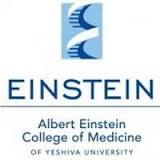Stereotactic Body Radiation Therapy in Treating Patients With Liver Cancer That Cannot Be Removed by Surgery
| Status: | Active, not recruiting |
|---|---|
| Conditions: | Liver Cancer, Cancer, Cancer, Cancer, Cancer, Cancer, Cancer, Cancer |
| Therapuetic Areas: | Oncology |
| Healthy: | No |
| Age Range: | 18 - Any |
| Updated: | 5/27/2018 |
| Start Date: | October 7, 2010 |
| End Date: | May 2019 |
A Pilot Study of Stereotactic Liver Irradiation for Hepatocellular Carcinoma
This pilot clinical trial studies stereotactic body radiation therapy in treating patients
with liver cancer that cannot be removed by surgery. Stereotactic radiation therapy may be
able to send x-rays directly to the tumor and cause less damage to normal tissue.
with liver cancer that cannot be removed by surgery. Stereotactic radiation therapy may be
able to send x-rays directly to the tumor and cause less damage to normal tissue.
PRIMARY OBJECTIVES:
I. To evaluate feasibility and safety of stereotactic body radiation therapy (SBRT) of the
liver for treatment of hepatocellular carcinoma (HCC).
SECONDARY OBJECTIVES:
I. To evaluate radiographic local response, local control and time to local progression
(TTLP) of treated lesions in HCC patients after liver SBRT.
II. To evaluate overall survival (OS) and cancer specific survival (CSS) in HCC patients
treated with liver SBRT.
III. To evaluate explanted irradiated liver tissue (for patients who proceed to liver
transplantation) to determine extent of residual tumor and extent of radiation effects within
and around the irradiated field.
OUTLINE:
Patients undergo SBRT every other day over 2 weeks (5 fractions total) in the absence of
unacceptable toxicity.
After completion of study treatment, patients are followed up at 1, 3, 6, 9, and 12 months
and then every 6 months for up to 2 years.
I. To evaluate feasibility and safety of stereotactic body radiation therapy (SBRT) of the
liver for treatment of hepatocellular carcinoma (HCC).
SECONDARY OBJECTIVES:
I. To evaluate radiographic local response, local control and time to local progression
(TTLP) of treated lesions in HCC patients after liver SBRT.
II. To evaluate overall survival (OS) and cancer specific survival (CSS) in HCC patients
treated with liver SBRT.
III. To evaluate explanted irradiated liver tissue (for patients who proceed to liver
transplantation) to determine extent of residual tumor and extent of radiation effects within
and around the irradiated field.
OUTLINE:
Patients undergo SBRT every other day over 2 weeks (5 fractions total) in the absence of
unacceptable toxicity.
After completion of study treatment, patients are followed up at 1, 3, 6, 9, and 12 months
and then every 6 months for up to 2 years.
Inclusion Criteria:
- Life expectancy > 3 months
- Eastern Cooperative Oncology Group (ECOG) performance status =< 2
- HCC diagnosed by either of the following approaches:
- Histologic confirmation of HCC on biopsy
- Evidence of vascular enhancement of suspected lesion on at least two imaging
techniques
- Evidence of vascular enhancement on a single technique if the alpha-fetoprotein
(AFP) is > 200 ng/mL in the setting of cirrhosis or chronic hepatitis B/C
- HCC must be deemed unresectable by an experienced surgeon or patient must be medically
inoperable or extra-hepatic metastases must be present (making resection an
inappropriate treatment option) or patient must have declined the option of surgery
after consultation with a surgeon
- Barcelona Clinic Liver Cancer score of B or C required (i.e., intermediate or
advanced stage HCC)
- Prior liver resection or ablative therapy is permitted
- Prior transarterial chemoembolization (TACE) is permitted
- Patients must have recovered from the effects of previous therapy
- Maximal tumor size of 15 cm and > 700 cc of uninvolved liver
- Hemoglobin > 9.0 g/L
- Absolute neutrophil count >= 1.0 bil/L
- Platelets >= 70,000 bil/L
- Total bilirubin < 2 mg/dL
- International normalized ratio (INR) =< 1.5 or correctable with vitamin K (higher INR
acceptable if patient is on Coumadin)
- Aspartate aminotransferase (AST) or alanine aminotransferase (ALT) =< 6 times upper
range of normal
Exclusion Criteria:
- Active hepatitis or encephalopathy related to liver failure
- Prior radiation therapy to the upper abdomen or thorax
- Lesions within 1 cm from the stomach
- Prior uncontrolled, life threatening malignancy within the previous 6 months
- Pregnancy is not permitted; women of child-bearing age must undergo pregnancy testing
prior to enrollment
- Previous gastric, duodenal or variceal bleed within the past 2 months
- Thrombolytic therapy within 4 weeks or commencement of anticoagulant use within the
past 3 months
We found this trial at
1
site
Albert Einstein College of Medicine The Albert Einstein College of Medicine of Yeshiva University is...
Click here to add this to my saved trials
